Earlier this summer I watched the tremendous documentary Herb & Dorothy (2008) which follows a ridiculously adorable, now elderly, couple (Herb and Dorothy Vogel) who started collecting art in the ’60s and amassed one of the finest and most extensive of modern and contemporary art in the world. The twist here is this: Dorothy was a public librarian and Herb was a postal worker, subsisting on public servants’ salaries. Dorothy paid all the bills — their modest rent-controlled Village apartment, phone bill, etc. — and Herb’s salary was entirely devoted to their shared passion: collecting art. By 1992, they had amassed just under 5,000 works (all stored within their one-bedroom apartment!!) when they decided to donate it to the National Gallery for public consumption (they’d had offers from some of the largest art institutions, but chose to donate their collection to the National Gallery in part because it was free to the public).
Compare this story to another, published in June’s New Yorker, about Walmart heiress Alice Walton. Ms. Walton (third wealthiest woman in the world) has been aggressively collecting American art to open a museum in her hometown of Bentonville, Arkansas. Ms. Walton has been compared to other “great” female patrons of the art like Isabella Stuart Gardner and Abby Aldrich Rockefeller, both of whose institutions I enjoy with some regularity (the Isabella Stuart Gardner Museum and MoMA, respectively). And here lies my conflicted relationship with art patrons.
As Americans, one of the results of a consumerist mentality is that we have become collectors. Traveling thousands of miles by boat or even plane, our ancestors packed light, and even the wealthy did not have a lot to spare. Over time though, a substantial part of the American dream has become the accumulation of monetary wealth, and amassing a lot of things. Collecting things could be the habitual accumulation of “stuff” — unimportant things that we look at in our homes / backs of closets and say “gee, I never used that. Huh.” In the extreme, these people are labeled “hoarders” such as Homer and Langley Collyer who died in 1947 literally underneath 130 tons of collected (and booby-trapped!) items in their Harlem brownstone.
Collectors (with a capital “c”) take a more deliberate approach, honing their accumulation to a specific type of object, say, vintage bicycles, train models, cars, salt and pepper shakers, or clothes. Because fashion still lives in that nebulous region of is-it-or-isn’t-it-“art,” private fashion collectors have only recently been given gallery space to share their textile collections with the public. Exhibitions like Rara Avis: The Irreverent Iris Apfelat the Met (2005 – 06), or the upcoming Daphne Guinness at FIT. Ms. Apfel is known for her trademark humungous circular glasses and her free mixing of “high” designer and “low” retail, ethnic, antique, and contemporary sartorial elements, all within the same outfit. Ms. Guinness is recognizable by her towering, heel-less platforms, severe black-and-white hair, and her penchant for extreme silhouettes; I believe she wears haute couture or designer garments and shoes exclusively. Both women are buh-diculously wealthy, and therefore even my joy at fashion exhibits is tainted with the implicit suggestion that only the expensive wardrobes of rich women are worth displaying / studying / emulating.
Long-time street fashion photographer Bill Cunningham is refreshingly unimpressed with social standing (so often intertwined with financial worth); one of my favorite Cunningham-isms from the outstanding documentary Bill Cunningham New York is when Bill ignores the paparazzi-mobbed Catherine Deneuve because, simply, “she wasn’t wearing anything interesting.” !! The tragedy is that this is funny precisely because we all expect natural beauty, fame, and fortune to be the only justification necessary to report on people, in print or in pictures.
Even less formal outfit posting bloggers, usually the young and distinctly un-wealthy, often couch consumerist subtext in their blogs, offering photos of themselves in what may or may not be interesting, but is usually vaguely trendy, and oh-so-thoughtfully including notes about where they purchased the various pieces of their ensembles (skinny pants: H&M; tank top: F21; shoes: Steve Madden), insinuating that you too can run out to all our “local” box stores, buy these various items, and be as well-dressed/quirky as Susie Bubble. A typical post might be:
Especially “helpful” bloggers thoughtfully include links directly to shops where followers may purchase precisely the same outfit or components of one (there was one such link for the shoes in the above post). In contrast, if I were to follow the dominant formula, one of my own daily outfit posts (which I have recorded for about 3 years now, but not blogged) might look like this:
|
Because you will never find precisely the same garment or accessory as I used, and because I layer and modify so frequently, the point of publishing my own outfit posts could only be to provide general inspiration / amusement, and perhaps to show how easy and cheap (not to mention ecologically sound) DIY fashion is. I recognize that not everyone is comfortable sewing or even manipulating her clothes, but H&M and Target are not the only cheap, colorful option for a fashion-forward, person with serious budget constraints. There was a particularly upsetting moment in Fast Food Nation (the 2006 film) when a hard-up African American girl says she doesn’t believe she can afford to loose weight because (low-calorie) Subway sandwiches are too expensive to eat daily (McDonalds was cheaper, and therefore her preference). The girl had been so imbued with the fast food lifestyle that her idea of healthy food was still wrapped up in a corporate mindset, the question was no longer “how can I prepare healthy, inexpensive food,” but “what chain advertises low-calorie options?”
Thrift stores abound in most communities and you can often find unusual items for dirt cheap in them, not to mention supporting the local community. Alternately, many cities have young designer markets (New York has several of these, and I recently stumbled upon on in my hometown in Cambridge, MA) where you can find some cutting edge designs for reasonable prices. etsy is pretty terrific too, as an online community of artisans, many are willing (even delighted) to work with you on a customized garment or accessory.
I suppose my point of this rant is that all too often, the middle and working class just seems grateful for the crumbs of “high” culture the wealthy are willing to put in a museum, usually after their own deaths; or for glimpses of the revered elite hobnobbing in their thousands-of-dollars finery, for us to drool over wistfully, understanding we’ll never obtain it without marrying an oil baron. Meanwhile, the national appetite for luxury goods — clothing and otherwise — is astoundingly increasing at a rapid pace, even while unemployment continues to rise at its own alarming rate. People who care about and/or collect fashion don’t have to subscribe to this luxury market to pursue our study and love of clothes. I understand the impulse to buy, I’m not living off the grid or anything. But think about where your money is going, how hard you worked to earn it, and if you’re like me and your closet is your own special curated Collection, do you really want your dollars circulating in the big box stores that put small, independent designers on the ropes, and which contribute to the fast fashion bubble? Let’s take a page from those adorable Vogels, who developed relationships with local artists, and even with their modest salary, nurtured some of the great artists of our time.
DIY and fashion inspiration blogs:

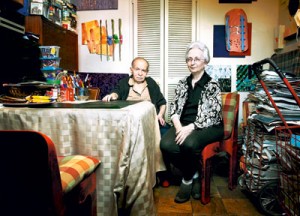


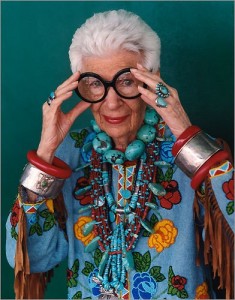
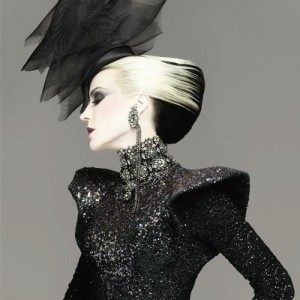

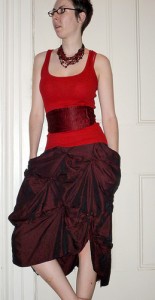
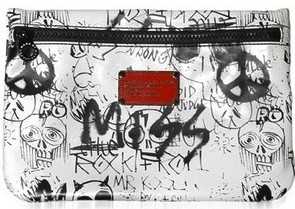
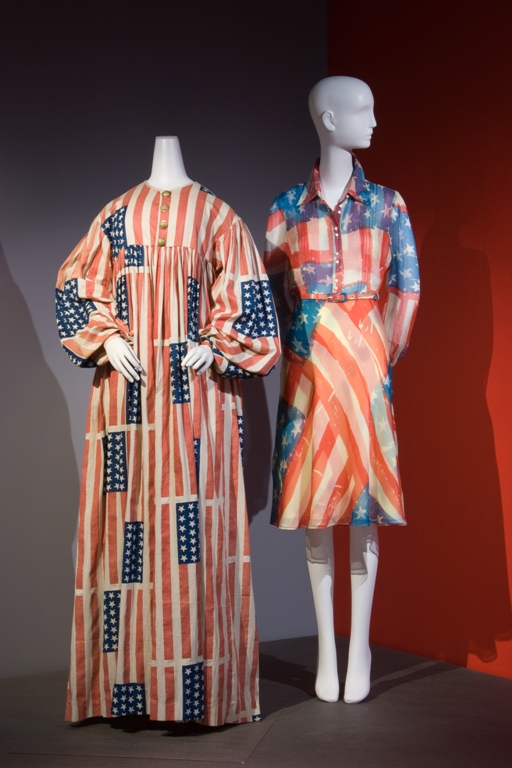

























3 comments
Karin says:
Sep 5, 2011
Jessica, thank you for this. It echoes closely what I find so distancing about much fashion coverage. And I love what you did with that skirt! I like blogs that inspire rather than encourage slavish copying.
Tove Hermanson says:
Sep 2, 2011
Jessica: indeed I am familiar with the Slow Fashion movement, a close cousin to the upcycling / secondhand / eco fashion movements!
Jessica Bourland says:
Sep 1, 2011
I find your ‘rant’ very similar to the sentiments of others I hear all the time about the corporate model of art, food, and fashion. I really love that you choose second hand (which is subsequently both eco-friendly and affordable) and true to the real spirit of fashion: self-expression, not just trend-chasing. Your reasons and values for doing so are also very similar to those of the Slow Fashion Movement. Have you read/heard much of it before?
You can check out our “What is Slow Fashion?” article to learn more:
http://www.slowfashioned.com/archives/4909
And sign the Slow Fashion Pledge:
http://www.slowfashioned.org/